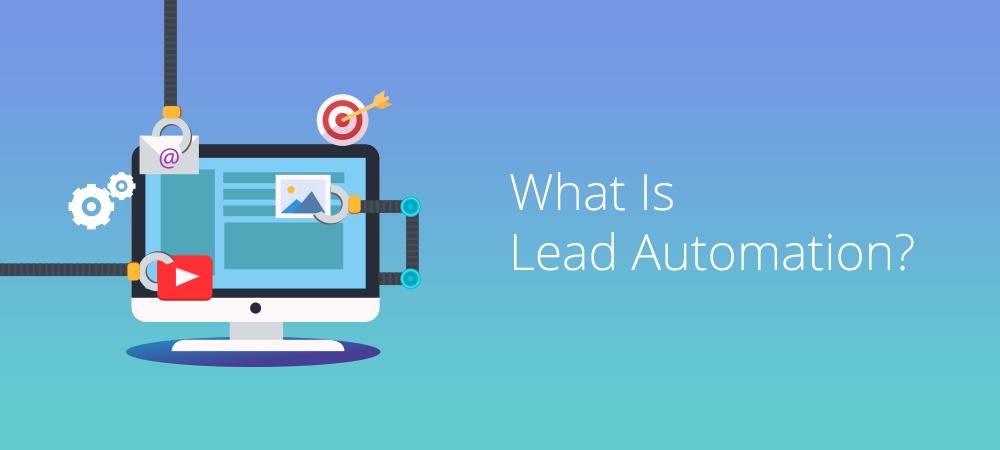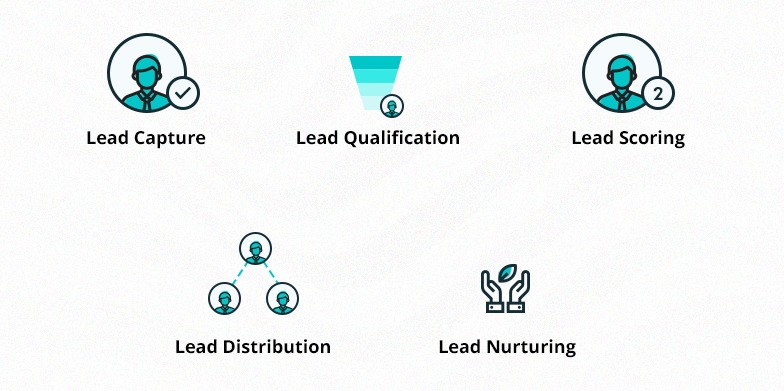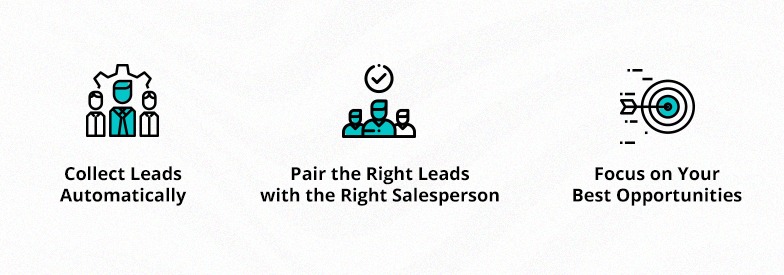Could lead automation be the answer to the never-ending battle of sales and marketing misalignment?
Sales and marketing lead generation follows a fairly standard process: marketing creates emails, blog posts, landing pages, and other content to attract prospects they can pass on to sales. The sales team takes those leads and nurtures them through the sales funnel until they either drop out or convert.

It’s logical enough, but sales and marketing don’t always agree on the quality of leads. Marketing looks at the number of leads in the funnel and think they’ve done their job, while sales argue that quantity and quality aren’t always the same thing.
Both sides are right. And wrong.
It’s time to fix the gaps that create these differences in opinion, and lead automation presents a viable solution that will help both teams remember they’re working toward the same objectives.
What Is Lead Automation?
Traditionally, leads would be collected through several marketing channels, such as contact forms, email signups, or other opt-ins. Leads would be reviewed and passed on to someone on the sales team to follow up with little or no regard to any characteristics of the lead.
Lead automation has completely changed this handoff from marketing to sales.
Simply put, lead automation embodies several criteria that help companies better determine the value and importance of every lead they receive so they can respond appropriately.

Let’s break it down into its five distinct functions:
Lead Capture
Lead capture automation tools collect specific information from each lead across all channels. As more companies move toward an omnichannel approach, it will become a top priority to provide seamless lead capture to keep customer data and the buyer journey in a single place.
Lead Qualification
Lead qualification looks at specific lead characteristics and pre-determines their quality before they end up in a salesperson’s hands. For example, someone who only filled out a few fields in your contact form would score lower than someone who filled in every field.
This helps salespeople focus more on quality leads that have a better chance of closing.
Lead Scoring
Similar to lead qualification, lead scoring looks at additional criteria to triage leads based on importance. For example, someone who signals they’re ready to buy would score higher than someone who signed up for an email newsletter.
Scoring helps salespeople recognize their best opportunities so they can strike while the iron is hot. Leads that are left to cool for too long may end up dropping out of your funnel before converting.
Lead Distribution
Not all leads are created equal, and neither are your sales team. If you have salespeople assigned to specific roles within your department, it’s important you hand them only the leads they have the best chance of closing.
Lead distribution takes this guesswork out of the process by sending leads to the right salesperson. This can be configured based on your criteria, including specific products or geographic territories.
Lead Nurturing
Once leads drop into your funnel, you’ll need to nurture them at every step of the buyer journey. This helps you build connections with your contacts, lead them through the stages in your funnel, build top of mind awareness, and guide them to an informed buying decision.
Lead automation can remove much of the manual labor associated with email nurturing, follow up, and other tasks. This allows the salesperson to has less hands-on responsibility and can focus more time on selling.
3 Ways Lead Automation Improves Your Sales Funnel
When combined, these five lead automation components create a powerful lead management system that improves your current sales funnel. Here’s how:

#1 – Collect Leads Automatically
Lead automation encompasses a variety of touchpoints where leads can enter your sales funnel: PPC campaigns, social media, landing pages, website, phone calls, and more. When you generate leads, automation kicks in to put them in the right place at the right time with no involvement from you after setup.
#2 – Pair the Right Leads with the Right Salesperson
Once you collect the leads, they automatically go to the salesperson with the best chance of converting them into customers. This means your salespeople are spending less time trying to fill their own funnels and can focus on the leads being handed to them. There’s no guesswork as to what needs to happen with each lead at each stage, so sales teams can do what they do best – selling!
#3 – Focus on Your Best Opportunities
When leads are qualified and scored, salespeople can shorten the sales cycle by prioritizing leads that are most likely to close. They know at a glance where their best opportunities are and can take care of those first. This not only improves the sales process for the company but also delivers a better experience for the customer.
How LeadSquared Fuels Lead Automation
LeadSquared combines all five parts of lead automation into a single strategy. From capturing leads to determining their worth to growing your relationship, we help you maximize every opportunity by filling the gaps traditional lead management leaves behind.
Start your free 15-day trial of LeadSquared to see it in action!








